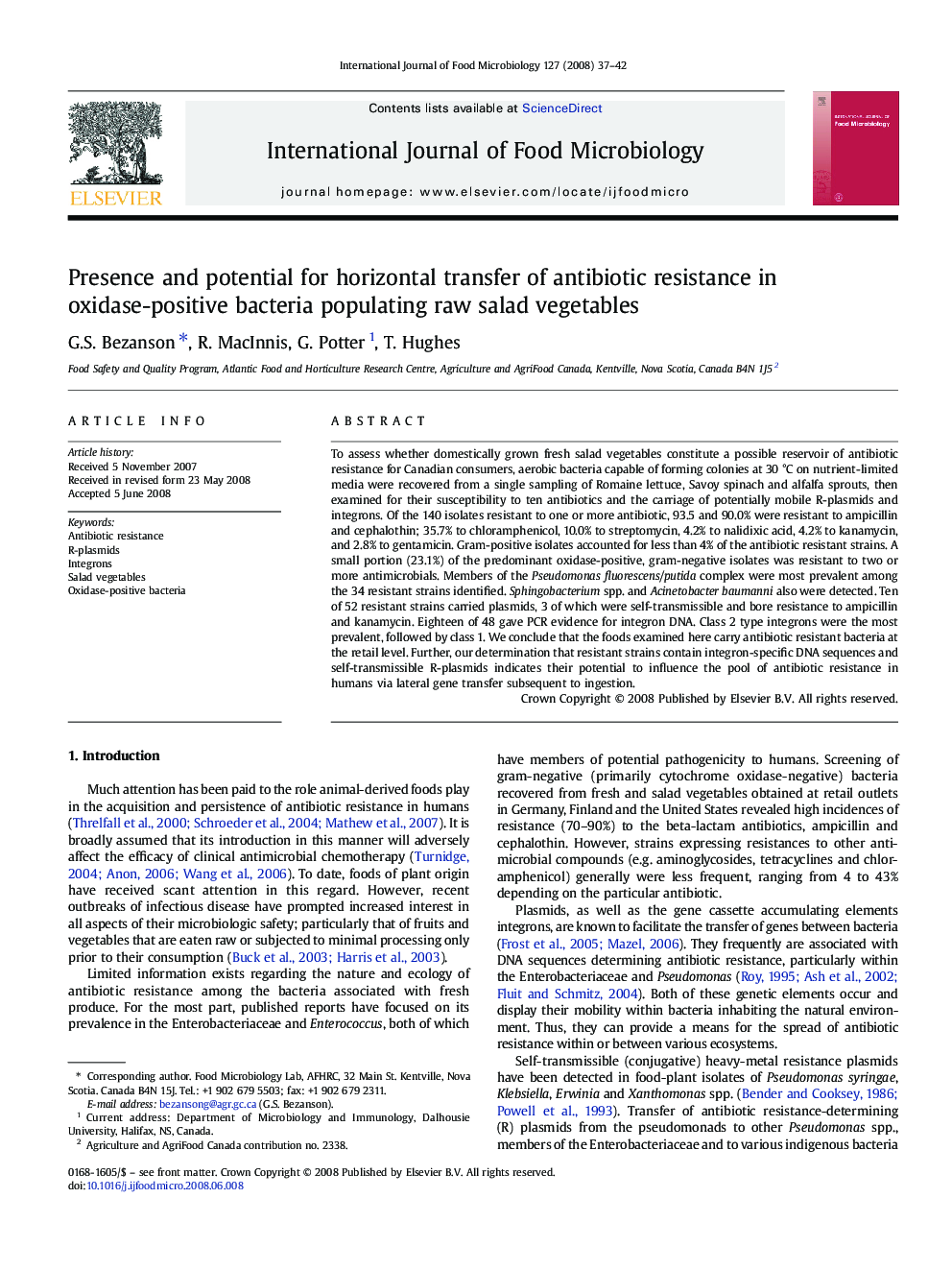| Article ID | Journal | Published Year | Pages | File Type |
|---|---|---|---|---|
| 4369883 | International Journal of Food Microbiology | 2008 | 6 Pages |
To assess whether domestically grown fresh salad vegetables constitute a possible reservoir of antibiotic resistance for Canadian consumers, aerobic bacteria capable of forming colonies at 30 °C on nutrient-limited media were recovered from a single sampling of Romaine lettuce, Savoy spinach and alfalfa sprouts, then examined for their susceptibility to ten antibiotics and the carriage of potentially mobile R-plasmids and integrons. Of the 140 isolates resistant to one or more antibiotic, 93.5 and 90.0% were resistant to ampicillin and cephalothin; 35.7% to chloramphenicol, 10.0% to streptomycin, 4.2% to nalidixic acid, 4.2% to kanamycin, and 2.8% to gentamicin. Gram-positive isolates accounted for less than 4% of the antibiotic resistant strains. A small portion (23.1%) of the predominant oxidase-positive, gram-negative isolates was resistant to two or more antimicrobials. Members of the Pseudomonas fluorescens/putida complex were most prevalent among the 34 resistant strains identified. Sphingobacterium spp. and Acinetobacter baumanni also were detected. Ten of 52 resistant strains carried plasmids, 3 of which were self-transmissible and bore resistance to ampicillin and kanamycin. Eighteen of 48 gave PCR evidence for integron DNA. Class 2 type integrons were the most prevalent, followed by class 1. We conclude that the foods examined here carry antibiotic resistant bacteria at the retail level. Further, our determination that resistant strains contain integron-specific DNA sequences and self-transmissible R-plasmids indicates their potential to influence the pool of antibiotic resistance in humans via lateral gene transfer subsequent to ingestion.
